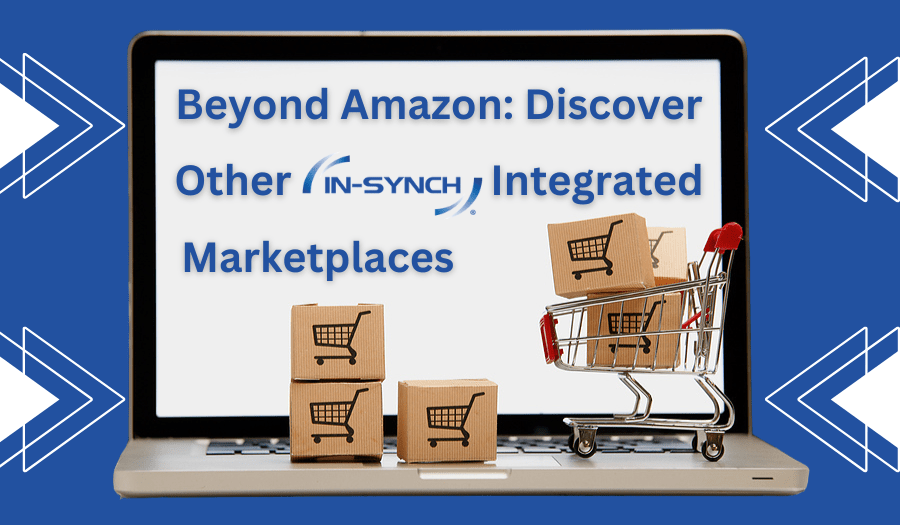By Ruth Richter • March 01, 2017
The Human Side of Big Data, Integration, and Automation
Author: Ruth Richter, ROI Consulting, Inc.
Automating the link between e-commerce and other business systems can have a big impact on the workforce. This data integration has many important benefits—fewer errors, lower labor costs, greater customer satisfaction, and higher employee productivity, to name a few. It’s a big win for the company, but what about the effect on the employees? The areas that may see the biggest change after integration are data entry, sales and customer service.
Data entry is an obvious role that is impacted. With integrated systems, data pass seamlessly and there is no longer a need for the repetitive task of data entry. The impact on sales and customer service may be less obvious. thinkJar’s annual survey reports that 78% of customers surveyed expect to get an answer from self-service. Integrated systems can make customers self-reliant and could mean that smaller sales and customer service teams are needed.
Automation is on the Rise
E-commerce integration is just one small piece of automation making an impact in today’s work force. Automation isn’t new. Worker’s jobs have been replaced since the Luddites in the First Industrial Revolution. What has changed is the rapid pace of technological advancements. We now have self-driving cars, 3-D printers, drone delivery systems and even robots in the operating room.
Not only are repetitive, manual jobs being supplanted by automation, but many routine cognitive tasks are being replaced as well. According to the 2016 Economic Report of the President, there is an 83% chance that a $20 an hour or less job will be replaced by automation in the future. But those who are in the $20-$40 an hour range are vulnerable, with a 31% chance of having their job eliminated due to new technology.
Automation is Not About Replacing Jobs but Retraining
While one of the main benefits of e-commerce integration is to eliminate manual tasks, it is not to eliminate people. That is unless the business has put integration off for so long that they’ve amassed a data entry regime that can’t all be repurposed. Automating a certain task, so that it can be done more quickly or cheaply, increases the demand for workers to do the other tasks around it that have not been automated. Rather than eliminating jobs, it changes the mix of work away from routine tasks toward things that are not cost-effective for a machine to do. There are still tasks that are much better done by humans than machines such as those jobs that require empathy or social interaction. For example, the inability to get a human when contacting a customer service department, after failed attempts to find their answer via self-service, is one of the greatest sources of frustration to customers.
In fact, automation creates an opportunity to enable employees to take on bigger challenges and have a greater impact than they did before. However, data entry employees may need to switch from their routine, unskilled job to a non-routine, skilled job. To overcome this skills gap, it is more important than ever to help workers attain new proficiencies quickly. When hiring, it is critical to employ those who can adapt to change easily since technology will continue to advance.
E-Commerce Integration and Automation Enables the Customer Experience Model
Another important statistic from thinkJar’s survey is that 84% of organizations are now embracing the customer experience model. The CEO of thinkJar, Esteban Kolsky likens a “company-centric experience design to a sledgehammer and a customer-centric experience design to a magnet – the power of pull is greater than the power of push.” Even when employees are retained after e-commerce integration, companies should expect to see an increase in profitability. Why? Because opening up new sales channels, increasing market presence, and improving the customer experience drives growth. Companies that move to internet sales and online self-service portals are seeing greater revenue increases than those who remain in traditional channels and use a traditional sales force. This revenue growth comes from expansion into new markets, but also because accurate recommendations and an easier shopping process encourage people to buy more. E-commerce integration enables greater revenue at a lower cost.
Repurposing and Equipping Sales
Those companies selling a simple product with short sales cycles may replace their sales teams with e-commerce. Buyers increasingly use the web to evaluate their purchase options and place an order. But in many industries, buyers still rely on salespeople to help them through the buying journey. Potential customers can reference websites, whitepapers, blogs and social media to understand and compare products. This means that the role of the sales team needs to change but the sales professional will still be required to help buyers navigate the unknown. While some buying steps are completed online, in more complex industries, buyers will have uncertainties. Innovative products may require sales representatives to suggest uses that are not apparent to buyers. Having a knowledgeable sales person available can make the difference needed to win the sale.
E-commerce and CRM data integration can also be used to increase sales productivity and effectiveness. Having better, real-time data at the sales team’s fingertips gives them the ability to identify customers’ requirements and work more effectively with the customer for creative solutions to problems.
Using tools like IN-SYNCH® for Sage 100 for e-commerce webstore portal integration, will bring positive change, but the impact on the workforce must be planned for.
ROI Consulting is the market’s leading Sage 100 integration specialist, maximizing Sage 100 customer’s technology investment through integration and customization since 1997. Learn more about ROI’s Sage 100 integration solutions at www.roi-consulting.com or by calling Ruth Richter at 402-934-2223×1.
This article was previously published in the Spring 2017 issue of Bellwether Magazine.




